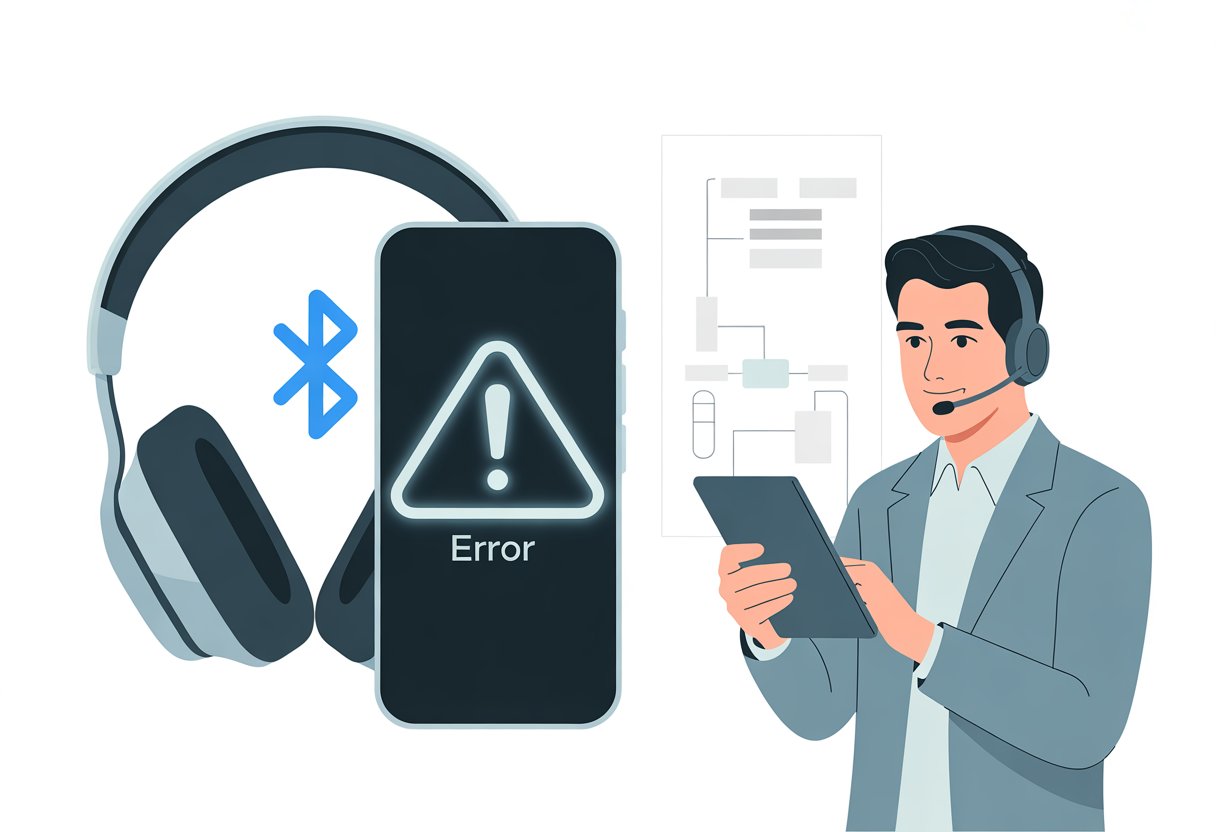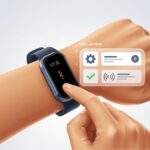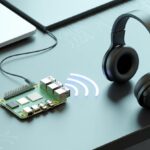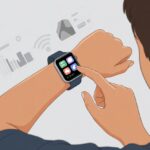Let’s be real—nothing kills the vibe faster than a “Bluetooth headphones error code 502” popping up just as you’re about to hit play on your favorite song. You spend ages picking out the perfect pair, and then, bam, a random error message stops you in your tracks. It’s almost comical, isn’t it?

Here’s some good news: there’s a simple solution for error code 502. A quick reset and fresh pairing usually brings your headphones back to life. If only everything in life worked that way—hold a button, delete, re-pair, and voilà! If you’re done with Bluetooth headaches and want your music back, you’re in the right place.
Let’s sort this out, get those headphones working again, and reclaim our right to jam. Stick around for some easy steps and a few handy tips to send error code 502 packing.
Understanding Bluetooth Headphones Error Code 502
Sometimes, Bluetooth headphones just refuse to cooperate, and error code 502 shows up like an uninvited guest. This error interrupts your music or podcasts, usually because of compatibility issues or a glitchy system.
What Is Error Code 502 on Bluetooth Headphones
Error code 502 typically means your headphones and device failed to connect or communicate. The code signals a problem with the link between the headphones and your phone, tablet, or computer.
It’s like a bad handshake—your headphones reach out, but your device just shrugs. Sometimes you see a pop-up, other times you just get silence and wonder what went wrong.
Common Causes of Error Code 502
Settings or software can get mixed up and cause this error. Here’s a quick rundown:
- Software glitches: Outdated drivers or interruptions during pairing.
- Too many connections: Your headphones get confused if you try to connect to several devices at once.
- Radio interference: Other wireless gadgets might be hogging the airwaves.
Sometimes, network or server issues also cause the error. When Bluetooth tries to connect to a device that isn’t responding right, you get error 502, which just means the response didn’t make sense.
Compatibility Issues and System Requirements
Bluetooth headphones aren’t universal—they need a compatible device. If your device uses an ancient Bluetooth version and your headphones are newer, things probably won’t work.
Manufacturers list system requirements for a reason. Unsupported operating systems, outdated chipsets, or missing drivers can trigger error code 502. Check the official compatibility list before buying, unless you want an expensive headband.
To check compatibility, you can:
| Task | What To Do |
|---|---|
| Check Bluetooth version | Match device and headphones specs |
| Review OS requirements | Make sure updates are installed |
| Read headphone manuals | Look for system compatibility |
Quick Fixes for Error Code 502
Bluetooth headphones can glitch for all sorts of reasons, but most issues have quick fixes. Start with the basics, check your settings, and try a few pairing tricks.
Restarting Your Headphones (And Your Patience)
Most tech problems need one thing: a restart. Turn your headphones off by holding the power button until the lights go out, wait a moment, then turn them back on.
Go ahead and reboot your phone or computer, too. Sometimes everyone needs a fresh start, including your gadgets.
If your headphones don’t have a reset button, check the manual or the manufacturer’s website for the right button combo. Waiting thirty seconds before turning things back on can help—maybe your headphones need a breather, too.
Checking Your Device’s Bluetooth Settings
Bluetooth issues often start with a simple setting. Open your device’s Bluetooth settings and make sure Bluetooth is on. If it is, try toggling it off and back on.
Look for your headphones in the paired devices list. If they show up as “Not Connected,” tap to connect. If they’re being stubborn, select “Forget This Device” so you can start fresh.
Airplane mode or battery-saving settings can block Bluetooth, so double-check those. Sometimes just a few taps can clear up error code 502.
Pairing Tricks That Actually Work
If the basics don’t work, it’s time for a little Bluetooth matchmaking. Hold the pairing button on your headphones until the light flashes—usually blue or red. That means they’re ready to pair.
On your phone or computer, scan for devices and tap your headphones when they appear. Sometimes you’ll need to confirm a code—don’t skip it, or the pairing won’t work. If your headphones don’t show up, move closer and remove other devices that might interfere.
Avoid pairing multiple headphones at the same time. Bluetooth gets confused, and honestly, so do most of us. Clear out old devices for smoother pairing. With a little patience, you’ll usually beat error code 502 and get back to your music.
Advanced Troubleshooting Tips
When error code 502 won’t go away, it’s time to dig deeper. Roll up your sleeves—it’s rescue mission time for your music.
Resetting Bluetooth Headphones
Sometimes your headphones just need a hard reset—like us after a long week. Hold the power button for about 10 seconds, or check the manual for the right combo if nothing happens. This kind of reset wipes out stuck connections and settings, almost like shaking an Etch-a-Sketch.
After resetting, remove the headphones from your device’s Bluetooth list and pair them again. If you skip this, the headphones might cling to the old connection. For more help, check out this quick reset guide.
Firmware Updates: Because Your Headphones Want Attention
Headphones love updates—almost as much as our phones do. Firmware updates fix bugs, improve sound, and sometimes solve errors like 502. Visit the manufacturer’s site or app, grab the latest firmware, and let your headphones have their tech spa day.
Follow the official instructions closely. Manufacturers usually list what changed, so you know what just happened behind the scenes. Updated firmware often solves problems basic troubleshooting can’t touch.
Bluetooth Driver Updates for Your Devices
Your headphones can’t fix everything alone. Sometimes your computer or phone needs new Bluetooth drivers. If your device runs old software, it may cause connection errors or refuse to recognize your headphones.
Check for driver updates in Windows Update, device settings, or on the manufacturer’s support page. Updating drivers can fix bugs and add features instantly. If you haven’t updated in ages, this might be the hero move—especially when Bluetooth headphones stop being detected. Sometimes, it really is as simple as “Did you try updating it?”
Software Tools for Error 502 Diagnostics
When Bluetooth headphones throw a 502 error, you’ll want tools that do more than just groan in sympathy. The right software helps you find issues, check settings, and sometimes even diagnose problems that only a computer could love.
Using Zoomin Software for Troubleshooting
Honestly, we can’t read minds—and headphones don’t exactly talk. That’s where Zoomin Software comes in. This tool digs into your device’s behavior.
With Zoomin, you can view error logs, see what was happening before error code 502 crashed the party, and even export info for tech support if things get wild.
- Review history logs to spot patterns.
- Monitor active Bluetooth connections and see if anything odd is going on.
- Test drivers and watch Windows freak out (just a little) before bouncing back.
Zoomin won’t magically fix everything, but it gives you the clues you need. Think Sherlock Holmes, but with more Bluetooth and less pipe smoke.
Leveraging create a crg for Device Analysis
If Zoomin doesn’t cut it, try creating a CRG (Customer Report Generator). Ever wanted to feel like a secret agent running diagnostics? Now’s your chance. Creating a CRG gathers all your device data into a neat report.
Here’s why that matters:
- Snapshot of device settings—no more guessing if Bluetooth is hiding.
- Logs all recent errors, not just 502, so you can spot trends.
- Hardware status report—almost like a checkup for your headphones.
After you create a CRG, you can share it with support or dig through it yourself, detective-style. It’s a fast way to see if the problem is your headphones or something deeper.
Seeking Help from Online Communities and Support Resources
Bluetooth headphone error code 502 can really test your patience. Luckily, there’s a ton of advice out there in online communities and official support sites—so you don’t have to face the silence alone.
Finding Answers on devacademy and devzone
When our headphones throw up that dreaded error code 502, it almost feels like tech is out to get us. But hey, we’re not stuck on our own. Devacademy and devzone both have real people sharing real questions—and better yet, real answers.
On devacademy, you’ll stumble across tutorials, quick-start guides, and step-by-step walkthroughs for fixing Bluetooth issues. What’s cool is that most of the advice comes from folks who’ve already wrestled with the same problems.
Devzone shouldn’t get left out. It’s always buzzing with questions about wireless devices, solutions, and clever little workarounds. If you post your problem, someone will probably jump in with a suggestion or a fix. Here’s a tip: use clear titles and give as many details as you can. People appreciate specifics—“Help, nothing works!” just doesn’t cut it.
Some of the most helpful topics we’ve run into:
| Topic | Why It Helps |
|---|---|
| Code 502 troubleshooting | Specific causes and fixes |
| Classic Bluetooth bugs | Old but very real issues |
| Firmware update tips | Making our devices less grumpy |
Consulting nordicsemi.com for Manufacturer Support
If you want answers straight from the source, nordicsemi.com is worth a visit. The manufacturer’s site has official docs, support articles, and firmware files just waiting for you to grab.
Their support section usually explains errors, recommends updates, and points you to forums where other users hit the same “502” wall. If you’re really stuck, you can even reach out to customer support.
Don’t skip the FAQ and documentation. Sometimes, you’ll find a simple answer like “Download version X.Y.Z” or “Press button A and shout ‘connect!’” (Well, maybe not the shouting part, but you get the idea.)
When you’re poking around, keep your device’s model and firmware version handy. It just makes everything easier—and saves you some headaches later.
Preventing Future Bluetooth Headphones Errors
Let’s try to keep our headphones and laptops from fighting like siblings. We can help them get along by picking compatible devices and keeping all their software up to date.
Maintaining Device Compatibility
If we want music instead of mayhem, we have to make sure our Bluetooth headphones and computers actually like each other. Not every set of headphones plays nice with every device. Laptops might have old Bluetooth versions or missing drivers that throw a tantrum when paired with shiny new headphones.
It’s smart to check the headphones’ packaging or specs for Bluetooth versions like 4.2, 5.0, or 5.3. Your laptop should be running an operating system that matches the headphones’ requirements. If your laptop’s as old as a VCR, it probably won’t support the latest Bluetooth features.
When you’re unsure, check the manufacturer’s website for compatible device lists or minimum system requirements. Some headphones need special apps or drivers to work right. If you connect to unsupported devices, you might get an error code faster than you can say “pairing mode.”
Checklist:
- Check Bluetooth versions for both devices
- Make sure the OS is up-to-date
- Look up minimum system requirements
- Update or install needed drivers
Regular Updates: The Vitamin C of Bluetooth Life
Software updates are basically vitamins for our tech—except, honestly, way easier than eating oranges.
When you keep Bluetooth drivers, your operating system, and even your headphone firmware up to date, you’re way less likely to run into connection bugs or those annoying 502 errors.
Let’s just set our laptops and headphones to update automatically whenever we can. Headphones from brands like Sony or Bose? They often have their own apps that push out important firmware updates, even if it doesn’t sound thrilling.
Still, those updates can squash bugs and give you a more stable connection. Not bad, right?
If you run into a Bluetooth driver problem on Windows, just open Device Manager, right-click the device under Bluetooth, and look for “Update driver.”
And yeah, don’t forget to restart everything after an update finishes. Waiting an extra minute for your system to reboot isn’t fun, but it’s worth it.
Pro Tips:
- Allow automatic updates
- Regularly check for driver and firmware updates
- Restart devices post-update
- Use manufacturer apps when available
- How to connect Bluetooth headphones to a Chromebook Without Summoning Tech Support - December 15, 2025
- Best Fitness Trackers for EMS Workers: Because Your Heart Rate Isn’t the Only Thing Racing - December 15, 2025
- Why do my Bluetooth headphones not skip tracks? Tech tantrums and other musical mysteries - December 14, 2025






